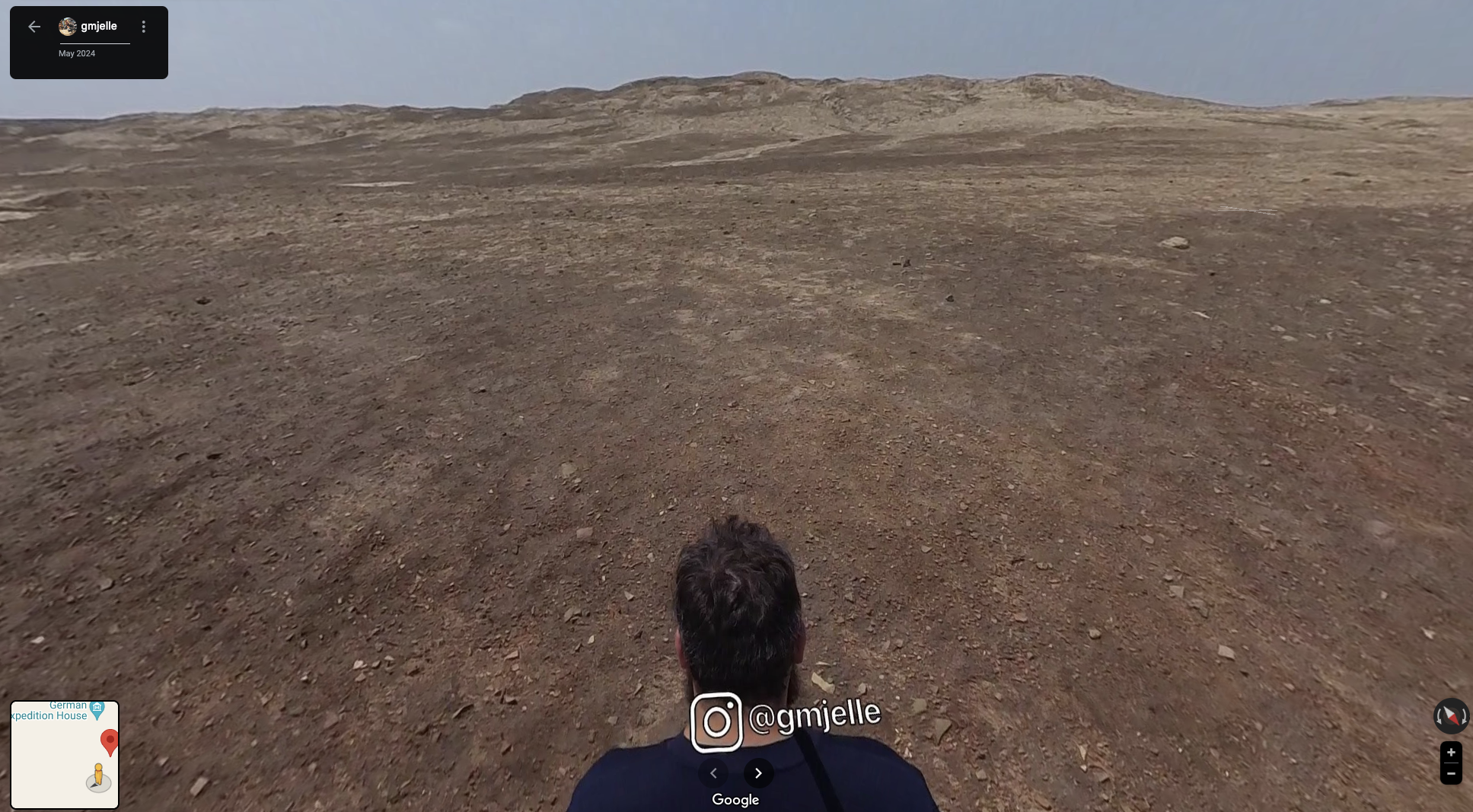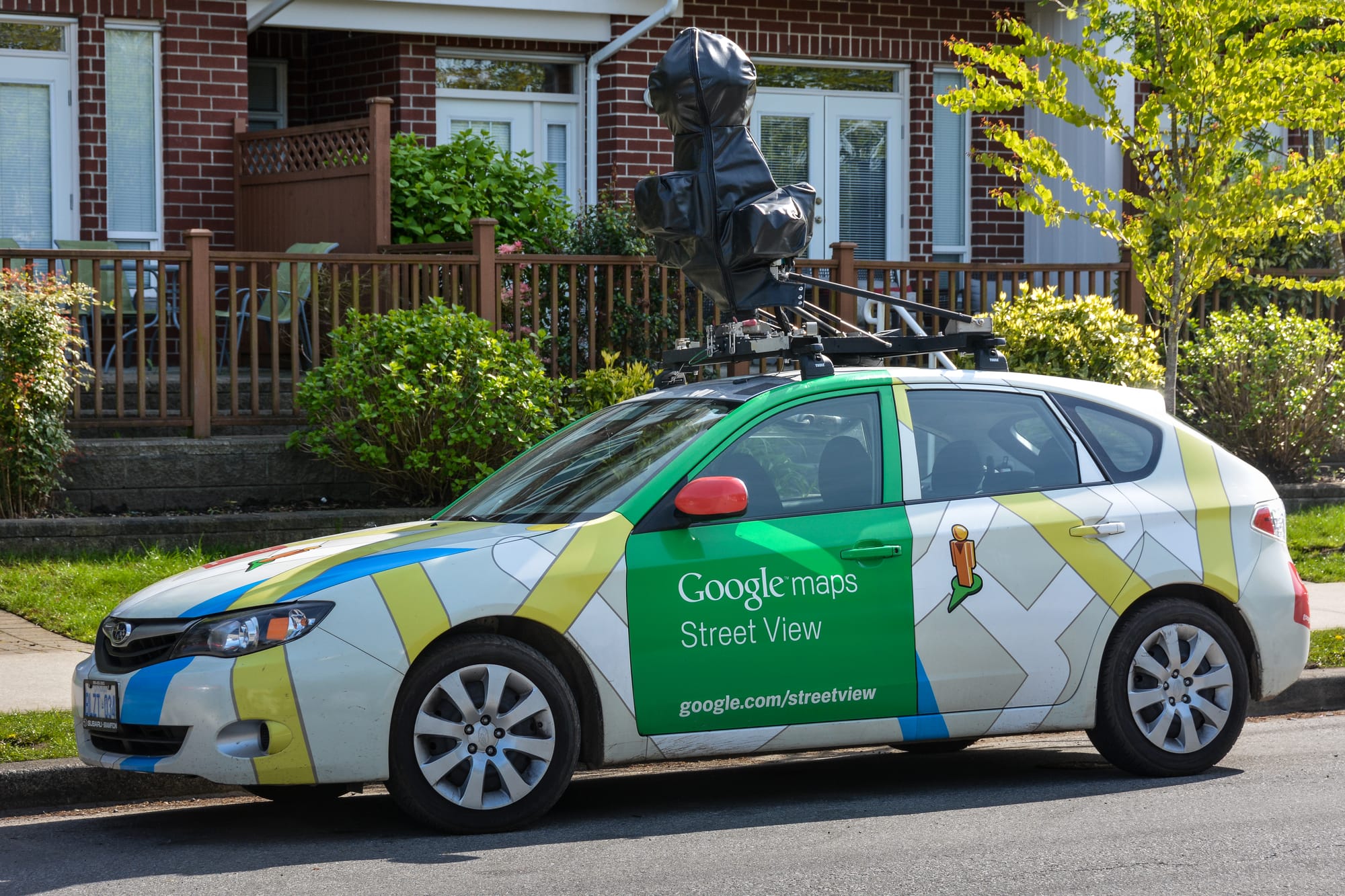I added four famous places to Google Street View


You might have seen a Google Street View car like in the picture above. These cars drive around all over the place, capturing their surroundings in 360 degrees with that big camera on top of the vehicle.
Those images then get added to Google Maps, and these are part of the official Google Street View imagery.
Besides those cars, Google also has cyclists and people walking around with a 360 camera on top of their head to capture places where cars are not allowed. However during my last road trip through East Europe, Turkiye, Iran & Iraq, I found four places Google didn't capture yet. Four places with a ton of history, that make me super proud to add them to Google Street View.
Which places, you ask? Let's find out!
Buzludzha Monument in Bulgaria
The Buzludzha monument is a officially the Monument House of the Bulgarian Communist Party. It's built on the Buzludzha Peak in central Bulgarian. Building started in 1974 and finished in 1981.
Inside, there are some wonderful Soviet Mosaics, but unfortunately they closed off the inside for the public, because the building is in very bad state.
When I added it on Google Street View, there was only one other blue line, but these days on GSV there are a few other people that added it.
So, while I might not be the first or the only person to have added this amazing monument to GSV, I'm still one of the few that have preserved it for future generations to visit digitally
Troy
Yes, that Troy. The city famous from the ancient story about the Troian horse, and the 2004 epic movie with Brad Pitt, Orlando Bloom, and many other famous movie stars.
It's located on the West coast of Turkiye, and while it's not the most impressive ancient site to visit in Turkiye, it's definitely worth a visit! Just for the myths alone!
The site is divided in Layers, randiging from Troy 0, which is dated to the Early Bronze Age, up to Troy IX, dated to the Roman Period.
I'm currently still the only person to have added Troy to Google Street View!
Ur
Located in modern day Iraq, it was one of the most important Sumerian city-states in ancient Mesopotamia. It's famous for the Ziggurat of Ur, which you can see in the Google Maps snippet above.
It was founded in 3800 BC, that makes it almost 6000 years old!
If you've read the Bible, you might remember there was a place mentioned called Ur Kasdim. Scholars think that Ur is possibly Ur Kasdim, the birthplace of Abraham.
There is a ruin called "Abraham's house", but unfortunately, when I was there, a big part of the site was closed off for the public, so I couldn't add it to Google Street View. Maybe one day I'll have to go back then...
Uruk
This one is by far my favorite. Let me explain you why.
You know that meme about how every man thinks on a daily basis about the Roman Empire? I have the same but with Mesopotamia.
When I was 12, and I was in grade 1 of secondary school, I learned about Mesopotamia for the first time, and it intrigued me. What also didn't help that compared to Greek and Roman history, the time spent on the history of Mesopotamia was really short.
City-States.
Cuneiform.
Invention of the wheel.
Cradle of civilization.
Done.
That was basically it.
As it intrigued me so much, I went to the library a lot to find books about it, but I remember that was also very limited.
One of the books I got was about the epic of Gilgamesh. I can't remember which book it was, and I can't find it, but I got so obsessed with the epic poem. I must've read that book at least a dozen times in the four weeks I loaned it from my local library.
So twenty years after I first encountered Gilgamesh and Uruk, I was standing there in the Iraqi desert, with a 360 camera strapped on my back. Capturing the ancient city of Uruk, the birthplace of King Gilgamesh. A city that was once thriving, with very fertile soil, and that was now in the barren desert, under the excruciating heat of the sun.
In the epic poem of Gilgamesh, Gilgamesh is on a long and perilous journey to discover the secret of eternal life.
Spoiler alert:
While he doesn't discover the way to not die, he realizes that eternal life is not about living forever. It's about being a good man, and in his case, a good King.
After his heroic journey across the world on the lookout for ways to live forever, he returns to Uruk, taking his responsibilities, and realizes what it takes to be a good King.
In the end he got what he wanted: he didn't die. Millions of people still know his story today.
We don't know exactly when Gilgamesh lived, but scholars think it's around 2900-2700 BC.
So 4700 years after he died, a Belgian drove his motorcycle to Iraq, to visit Gilgamesh' birthplace and walk around it with a 360 camera so it could be added to Google Street View.
Keeping the story of Gilgamesh alive for a little longer.


